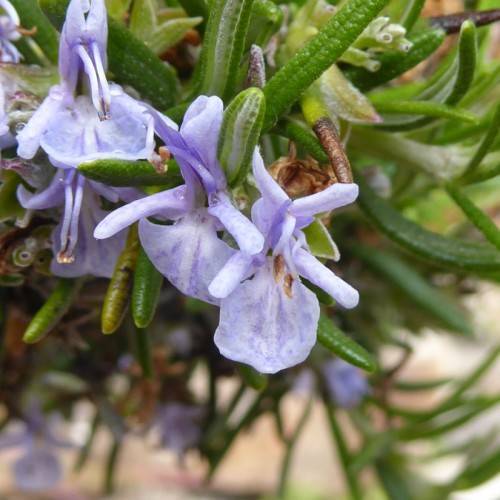
rosemary
Salvia rosmarinus 'Salem'
Cycle:
Herbaceous Perennial
Watering:
Minimum
Hardiness Zone:
8 - 10
Flowers:
Flowers
Sun:
Full sun
Leaf:
Yes
Growth Rate:
Low
Maintenance:
Moderate
Drought Tolerant:
Yes
Salt Tolerant:
Yes
Care Level:
Medium
watering
Rosemary (Salvia rosmarinus ' Salems') should be watered once every 7-10 days. When watering, make sure the soil is evenly moist without being over-saturated. Water from the top, then allow the soil to dry out slightly before watering again. During the summer, it is recommended to water a bit more frequently, while in the winter the watering should be light but more often.
sunlight
Rosemary (Salvia rosmarinus 'Salem') is a species of plant that needs an ample amount of sunlight for optimal growth. Rosemary plants should receive 6 to 8 hours of direct sunlight each day in order to produce foliage, blossoms, and optimal development. Placing rosemary plants in a south-facing window or in a spot that receives a large portion of sunlight throughout the day is ideal. In addition, rosemary will benefit from some afternoon shade during the hottest part of the day in overly hot summer climates.
pruning
Rosemary (Salvia rosmarinus 'Salem') should be pruned in early spring before any new growth appears. Pruning should be done in 2 stages; first remove any dead or damaged wood. Secondly thin out the stems by reducing their length by up to 1-third. This will encourage new, strong growth, improve air circulation around the plant, and help to control the overall size of the plant. Additionally, occasional pruning of the tips of the stems will help to promote newer, bushier growth. It is important to avoid over-pruning as this can lead to poor growth and flowering performance.
